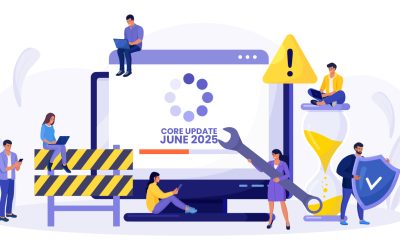Content is a vital marketing tool that can drive more people to read about your business and also generate backlinks from high-authority websites. Good quality content also improves your online visibility and encourages people to buy your products or services. So, make sure that you use content strategically along with relevant keywords so that you get ranked higher, reach out to your target audience, improve your sales and expand your business. While we know that quality content is important, it is also important to understand that duplicate content can harm your business. It can negatively affect your website’s SEO and ranking of the website. So, to produce unique and quality content and to avoid duplicate content, businesses can reach out to content writing services.
What is duplicate content and why is it dangerous?
Duplicate content is content that is available on more than one URL on the web. In simple terms, it is content that is a copy of content found elsewhere on the internet. Such content can be identical or similar, and changing a few words or the names of the brand or location cannot make it unique. This can negatively affect your organic search performance.
When there are more than one URLs that show the same content, the search engine may not be able to choose a URL and list it on the search engine results page. Instead, the search engine may lower the rank of both URLs and prefer to highlight other web pages. This is how duplicate content can affect your ranking and let down your business. Duplicate content can lead to many consequences such as the following.
- SERP will show wrong version of the pages
- Key pages will face indexing issues and will not perform well in SERPs
- Decline in core site metrics
- Search engines show other unexpected actions due to confusing prioritization signals.
There is no definition about which content will be prioritized or which website will be understated but search engines always aim at providing the best results for users.
What causes duplicate content?
There are many technical reasons that result in duplicate content and some of these are:
- Misunderstanding the concept of URL: A CMS or content management system that powers the website may have a certain article in its database. The website’s software may allow that same article to be retrieved through multiple URLs. This issue mainly happens when the developer considers the ID the article has in the database as the unique identifier rather than the URL. However, as far as the search engine is concerned, the URL is the unique identifier for a certain piece of content.
- Sessions ID: Keeping track of your visitors is important to know their purchase patterns and to do that you have to give them a session. A session refers to a brief history of what the visitors did on your website. To maintain that session as a visitor clicks from one page to another, the unique identifier known as Session ID needs to be stored as cookie. But search engines do not store cookies and in such cases, some systems fall back to using Session IDs in the URL. This means that every internal link on the website gets a session ID added to the URL for that session and each session ID can create a URL, which leads to duplicate content.
- URL parameters that are used for tracking and sorting: Duplicate content can result from the use of URL parameters for certain purposes such as tracking links. Such URL parameters don’t change the content of a page and will allow you to track the visitor source. However, it could make it difficult for the website to rank well. Apart from tracking parameters, any parameter you add to a URL (such as for showing another sidebar or to change the sorting on a set of products) can create duplicate content.
- Orders of parameter: A CMS may not use clean URLs, which could be an issue. Consider URLs such as /?id=1&cat=2; and /?cat=2& id=1, where ID refers to the article and “cat” refers to the category. – these may provide the same results in most websites but are completely different for search engines (example given in yoast.com/).
- Scraped content and syndicated content: Sometimes duplicate content may be generated when another website copies your content with or without your consent. These don’t always link to your original article and the search engine ends up having to deal with another version of the same article or blog or other content. As your website becomes more popular, the number of scrapers will increase, thereby intensifying the problem of duplicate content. Syndicated content refers to your content that is republished on another website. This is different from scraped content because it is shared with your permission. When content is syndicated, it becomes more visible and attracts more traffic to your website.
- www vs non-www URLs: When the www and non-www versions of your website are both accessible, it can be confusing for the search engine. As for instance, http://www.category.com and http://category.com. Similarly, URLs with http and https; and those with and without a trailing slash at the end of the URL can also create duplicate content issues.
Tips to Prevent Duplicate Content
The following are some of the tips to avoid duplicate content.
- Canonical tags: This is important to combat duplication of content on your site or across multiple sites. The rel= canonical element is a snippet of HTML code which makes it clear to Google that the publisher owns the content, even when the content is found on other sites. These tags indicate to Google which version of a page is the original version. It can be used for print vs web versions of content, mobile and desktop page versions, or multiple location targeting pages. There are two types of canonical tags – those that point to a page and those that point away from the page. Those that point to another page tell search engines that another version of the page is the master version. The other tags are called self-referencing canonical tags which are important for recognizing and eliminating duplicate content.
- Taxonomy: Check your site’s taxonomy randomly. Whether you have a new, existing, or a revised document, it is good to begin by mapping out the pages from a crawl and assigning a unique H1 and focus keyword. Organizing your content in a topic cluster can help you develop a thoughtful strategy that limits duplication.
- Duplicate URLs: Many structural URL elements can lead to duplication of content issues. This is because of the way search engines perceive URLs. If there are no other directives or instructions, a different URL will always mean a different page. Lack of clarity or wrong signalling can cause fluctuations or decrease in core site metrics. The two most common reasons for duplicate versions of URLs include: HTTP and HTTPS versions of pages, www. and non-www., and pages with trailing slashes and those without. In the case of www and non-www, you need to identify the version that is most commonly used on your site and use only that to avoid any risk of duplication. You can also set up redirects to point to the version of the page that must be indexed so that there is no risk of duplication. Regarding HTTPS and HTTP URLs, the former is the secure option because it uses encryption or SSL that makes the page secure.
- Meta tagging: Look for meta robots and the signal that you are sending out to the search engine from your page. Meta robot tags are useful if you wish to exclude a certain page or pages from being indexed by Google and would prefer them not to show up in search results. Adding no index meta tag to the HTML code of the page helps to convey to Google that you don’t want it to be shown in the SERPs. This is the best method to block as it helps in the most granular blocking or page or file while robots. txt is for larger scale undertakings.
- Parameter handling: URL parameters show how to crawl sites for search engines efficiently. As mentioned earlier, parameters can lead to content duplication. But with parameter handling, crawling of the sites can be more efficient and effective. It is beneficial to search engines, and especially for bigger sites and those with integrated search functionality it is vital to implement parameter handling via Google Search Console and Bing Webmaster Tools. You need to indicate the parameterized pages in the respective tool and signal to Google so that it is clear to the search engine that these pages are not to be crawled, and also know if any additional action needs to be taken.
- Redirects: Redirects are useful in eliminating duplicate content and pages that are duplicated can be redirected and pointed to the main version of the page. There are two important considerations when using redirects, i.e. Firstly, make sure to redirect to the higher-performing page to minimize the impact on your site’s performance; and secondly, use 301 redirect if possible.
What to do if your content has been copied
There are three things that you can do if your content is copied:
- Connect with the webmaster responsible for the site that has copied the content and ask for accreditation or removal
- Use self-referencing canonical tags on all new content so that your content can be recognized as the true source if there is any duplication.
- Use Google Search Console to find out how regularly your site is being indexed.
It is always best to stay away from duplicate content because it can affect your site’s performance. The best way to avoid duplicate content is to create unique content. To create that, develop a site structure and focus on your users and their journey onsite. Quality content is an essential part of SEO.
So, you can also rely on professional content writing services that can help you develop unique and valuable content that can attract the target audience, rank your website higher, get more traffic to your business and increase brand awareness. They can create content based on what your users are looking for and this prevents any duplication of content that can affect the site’s performance.
| Need help with search engine optimization, content writing services, and web design services? Our team at MedResponsive can help!Call us at (800) 941-5527 and schedule a FREE consultation with our Senior Solutions Manager. |




